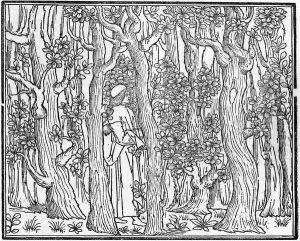Aldus Manutius Paintings
Aldus Manutius, born Aldo Manuzio, was not an artist in the traditional sense of a painter or sculptor, but rather a pioneering figure in the field of printing and typography, who had a profound impact on the dissemination of knowledge and the arts during the Renaissance. Born in 1449 in Bassiano, in the Lazio region of Italy, Manutius was educated in Rome and later in Ferrara, where he studied Greek and Latin classics, showing an early aptitude for humanist scholarship.
In the late 15th century, Manutius moved to Venice, which at the time was a hub of commercial activity and the printed word. In 1495, he established the Aldine Press (Officina Aldina), which became one of the most important and innovative printing houses of the Renaissance. His mission was to produce more accurate and accessible editions of the classical texts of Greece and Rome, and to do so, he gathered around him a team of skilled craftsmen and scholars, including the type designer Francesco Griffo.
Manutius introduced several innovations that revolutionized the book industry. He is credited with the invention of the italic typeface, first used in an edition of Virgil in 1501, which allowed for more text to be fit onto a page and made books more portable. He also pioneered the use of the semicolon and developed the modern use of the comma. His smaller, more affordable books, known as the Aldine octavos, were easy to carry, which contributed to the spread of literature and ideas.
Furthermore, Manutius established the use of the Greek alphabet in print and was the first to publish many of Greek antiquity's most important texts, including works by Aristotle, Plato, and Sophocles. His editions were noted for their accuracy and scholarship, which were due in large part to his collaboration with leading scholars of the time. He also created a library of Greek manuscripts, which served as the basis for his editions.
Aldus Manutius passed away on February 6, 1515, in Venice. His legacy lived on through the Aldine Press, which continued under the direction of his heirs and remained influential for many years. Through his dedication to high-quality printing and his innovations in typography, Manutius had a lasting impact on the arts, the dissemination of knowledge, and the development of the book as we know it today.
